Introduction
In the fast-paced world of construction, efficiency and sustainability are key factors that determine success. One crucial aspect of construction projects is material handling, and the introduction of material lift rentals has revolutionized this process. Material lifts offer unparalleled versatility, effortlessly lifting heavy materials, reaching great heights, and navigating diverse terrains.
The strategic use of material lift rentals not only solves immediate logistical challenges but also contributes to a larger narrative of cost-efficiency and environmental stewardship. Moreover, optimizing workspace layout, reducing labor costs, increasing safety measures, and enhancing productivity are all achievable through the intelligent use of material lift rentals. By streamlining material handling, extending equipment lifespan, improving project timelines, and prioritizing better inventory management, construction firms can ensure smooth operations and meet project deadlines.
Additionally, choosing to rent material lifts supports a greener future by minimizing environmental impact and reducing carbon emissions. Embracing cost-effective solutions like material lift rentals enables construction project managers to optimize resources, save money, and contribute to the sustainable development of the industry. It's time to enhance construction project efficiency by leveraging the benefits of strategic material lift rentals.
Benefits of Material Lift Rental
Understanding the shifting landscape of construction practices and equipment is vital in a world where efficiency and sustainability are increasingly prized. The introduction of telescopic handlers stands as a testament to the industry's evolving nature. Delivering unparalleled versatility, these machines can effortlessly lift heavy materials, reach lofty heights, and transport loads across diverse terrains.
Their unique ability to navigate tight spaces and elevate objects beyond the reach of conventional equipment ensures that projects move forward with greater speed, thereby enhancing productivity and offsetting potential increases in heavy material transportation costs.
The concept of winching, a technique steeped in history from ancient Greece, continues to influence today's machinery designs that are central to maintenance, repair, and material handling across industries. Amidst rising concerns about carbon emissions and the push toward a circular economy, the role of material lifts is being viewed through a sustainability lens, where the reuse and recycling of construction elements, from bricks to entire structures, are paramount. Renting a material lift, therefore, resonates with this philosophy, providing a solution that supports continuity of use and reduced waste.
In an era where construction faces challenges such as inflated costs for key materials like concrete and machinery, finding cost-effective rental options becomes even more critical. The ability to choose the right equipment—be it stack parking lifts that optimize the use of limited space, or lifts that support efficient operation without the downsides of downtime and replacement—becomes a strategic decision. Moreover, as highlighted by industry leaders, the advances in lifting technology must align with stringent standards, ensuring that equipment is not only cost-effective but also meets the dual demands of performance and sustainability.
Therefore, by embracing material lift rentals, construction firms are not just solving an immediate logistical need—they're also contributing to a larger narrative of cost-efficiency and environmental stewardship.
Optimize Workspace Layout
Exploiting the full potential of material lift rentals hinges on strategic workspace arrangements. Implementation of cutting-edge technologies, like those deployed by innovative companies in the construction industry, reveals the significance of precise workspace design. Innovators have pioneered the use of smart systems that analyze building layouts for optimized design, similar to how a material lift's location can revolutionize workflow efficiency.
Renowned design firms, such as LPA Design Studios, capitalize on their office setups as live sustainability and wellness showrooms, enabling clients to experience robust design in action. This principle is echoed in optimizing material placement for uninterrupted project momentum. Similarly, CRA-Carlo Ratti Associati’s reconfigurable furniture concept underscores adaptability, a key aspect of effective workspace planning.
Recent advancements in robotics showcase another dimension of efficiency with implications for workspace layout. Companies like Rugged Robots employ AI-driven robots to create precise building layouts, mirroring the care a project manager must take in optimally situating material lifts. Lake|Flato’s daylighting approach also leads to superior worker well-being and productivity, reinforcing the notion that strategic spatial planning, including where to position rental equipment, is vital.
Statistics around daylight's impact on employee health and productivity further emphasize the critical nature of judicious layout design. The integration of robotic solutions from Rugged and Dusty Robotics, geared towards layout precision, offers a glimpse into future trends where meticulous planning will be paramount, not unlike the precise placement of rental lifts in a construction workspace.
Ensuring continual progress while enhancing worker safety and efficiency is achievable through intelligent layout decisions that mirror the developments sweeping across the construction industry.
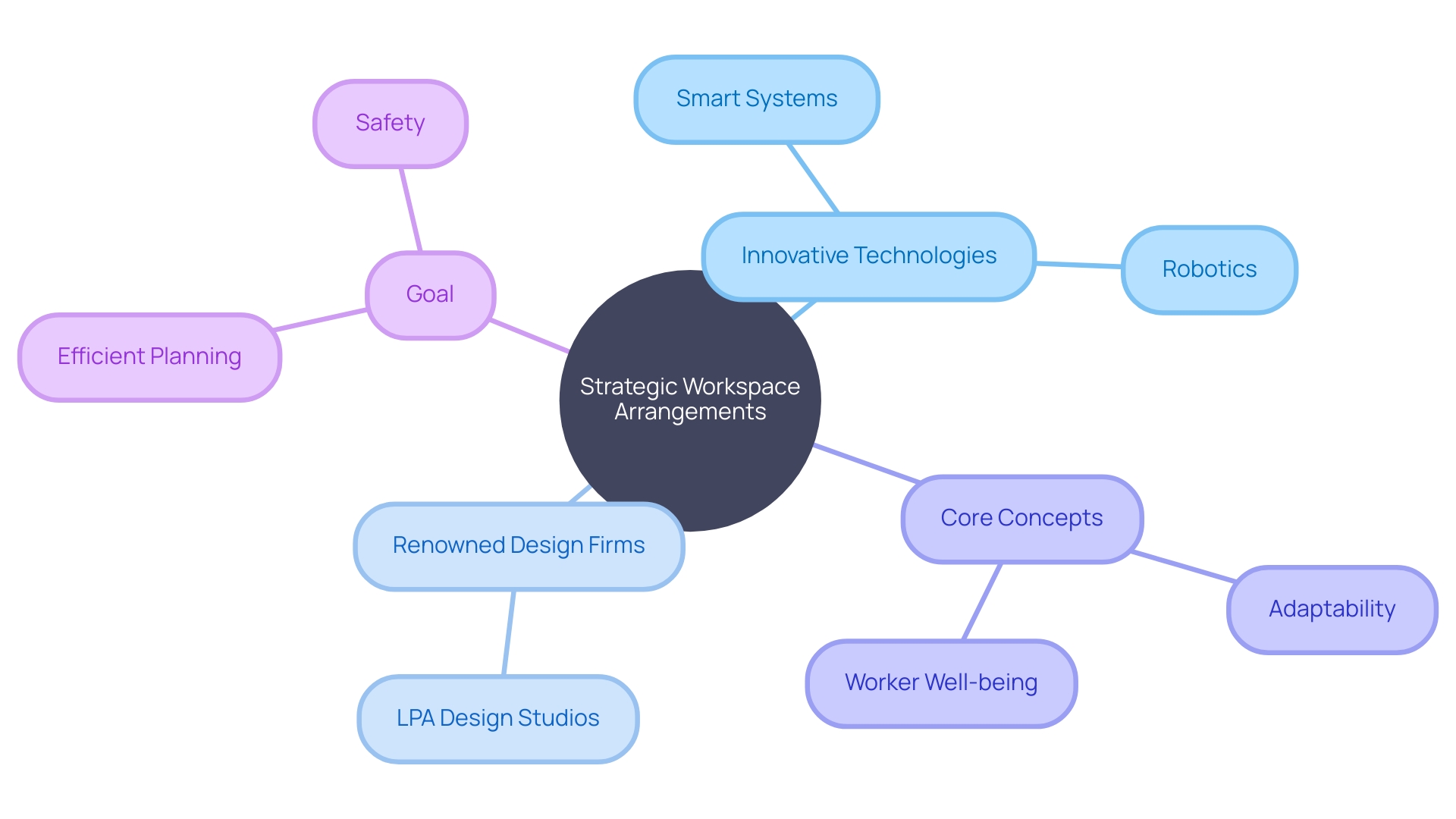
Reduce Labor Costs
Optimizing construction processes incorporates not just time management, but also a strategic reduction in labor costs. A notable example of innovation in this area involves utilizing material lifts, which have proven to be a game-changer. These machines eliminate much of the manual effort traditionally required for moving heavy items, streamlining tasks efficiently.
More than just speeding up the workflow, this mechanization significantly diminishes the risk of workplace injuries. The implications are considerable: less time lost due to injury, lower workers' compensation costs, and ultimately, a more streamlined budget. Indeed, companies like Suffolk, leveraging AI models to predict safety risks and thereby achieve a remarkable 25% reduction in incident rates, underscore the potential of technology to create safer, more cost-effective construction sites.
Increase Safety Measures
With safety at the forefront of construction operations, particularly in the high-stakes setting of road construction where risks abound, the introduction of equipment like material lifts plays a critical role in mitigating hazards and maintaining a secure jobsite. Recognizing this, material lifts come equipped with robust safety components, including secure platforms and guardrails, and are complemented by emergency stop mechanisms to ensure swift reaction to any potential threat. The innovation and design of such equipment are underscored by companies like Sellick Equipment Ltd., which has been revolutionizing the industry with machines designed for rugged terrains since 1969.
In light of recent events, such as the bridge collapse in India and the unfortunate incident involving Northridge Construction Corporation, the need for stringent safety protocols cannot be overstated. These incidents remind us that safety oversights not only result in tragic loss of life but also significantly impact project schedules, budgets, and organizational reputations. OSHA's training frameworks and regulatory requirements exist precisely to prevent such outcomes, highlighting the necessity not only for compliance but also for a culture of safety that puts worker welfare above all else.
The emphasis on safety is further validated by statistics citing back pain as the leading cause of work-related disability, largely attributed to repetitive tasks like heavy lifting without proper ergonomic practices—a risk that material lifts help alleviate. Moreover, implementing a comprehensive Construction Safety Plan, as seen in the construction of a Passenger Terminal for the Mentawai New Airport Development Project, illustrates a proactive approach to identifying risks and managing safety costs. Ensuring the welfare of workers and the public during construction projects is not just a legal mandate; it's a moral obligation and a cornerstone of a successful construction project management strategy.
Enhance Productivity
Harnessing the time-honored principles of lifting that trace back to the efforts of ancient Greeks, modern material handling has evolved substantially, embodying the essence of efficiency and safety. Through innovations witnessed by firms like Titan Lifting, the act of lifting, lowering, and transporting materials — particularly in the demanding context of construction — has become a sophisticated task. This sophistication is mirrored in the versatile capacity of materials lifts today which serve multitude purposes across various industries, not just within construction but also sectors like the paper and board industry where logistics are pivotal.
A shining example of this evolution is the telescopic handler. No longer are construction sites burdened with the inefficiencies of using multiple pieces of heavy machinery for diverse tasks. A single telescopic handler can assume the roles of many, merging the functions of lifting heavy materials, reaching difficult heights, and negotiating challenging terrains.
This consolidation of capabilities not only translates into direct cost savings but also ensures enhanced productivity.
Businesses like Musselman & Hall Contractors LLC, embrace such technological advancements, recognizing that the right tools are integral to staying competitive. Equipping their teams with machinery like telescopic handlers echoes the same sentiments — it's about providing quality tools that can handle the weight, heights, and stresses inherent in ambitious construction ventures. As told by Kyle VanSlyke, Musselman & Hall’s COO, prioritizing technology to keep ahead of marketplace shifts is essential for their over a century's worth of success.
Likewise, historical feats like the construction of the Sydney Harbor Bridge would have been unachievable without the help of robust lifting equipment. As Sellick Equipment Ltd’s legacy demonstrates, an innovation like transforming a Ford 4500 tractor into a 6,000-pound capacity forklift can spawn an entire industry niche, with over 11,000 machines in use globally today — a testament to the critical role of such machinery in construction and various material-handling applications.
Telescopic handlers empower construction managers to navigate the challenges of material transport with ease. They bring forth a new dimension of productivity and redefine what it means to be cost-effective, ensuring that material lift rental remains not just a detail, but a cornerstone strategy in efficient project management.
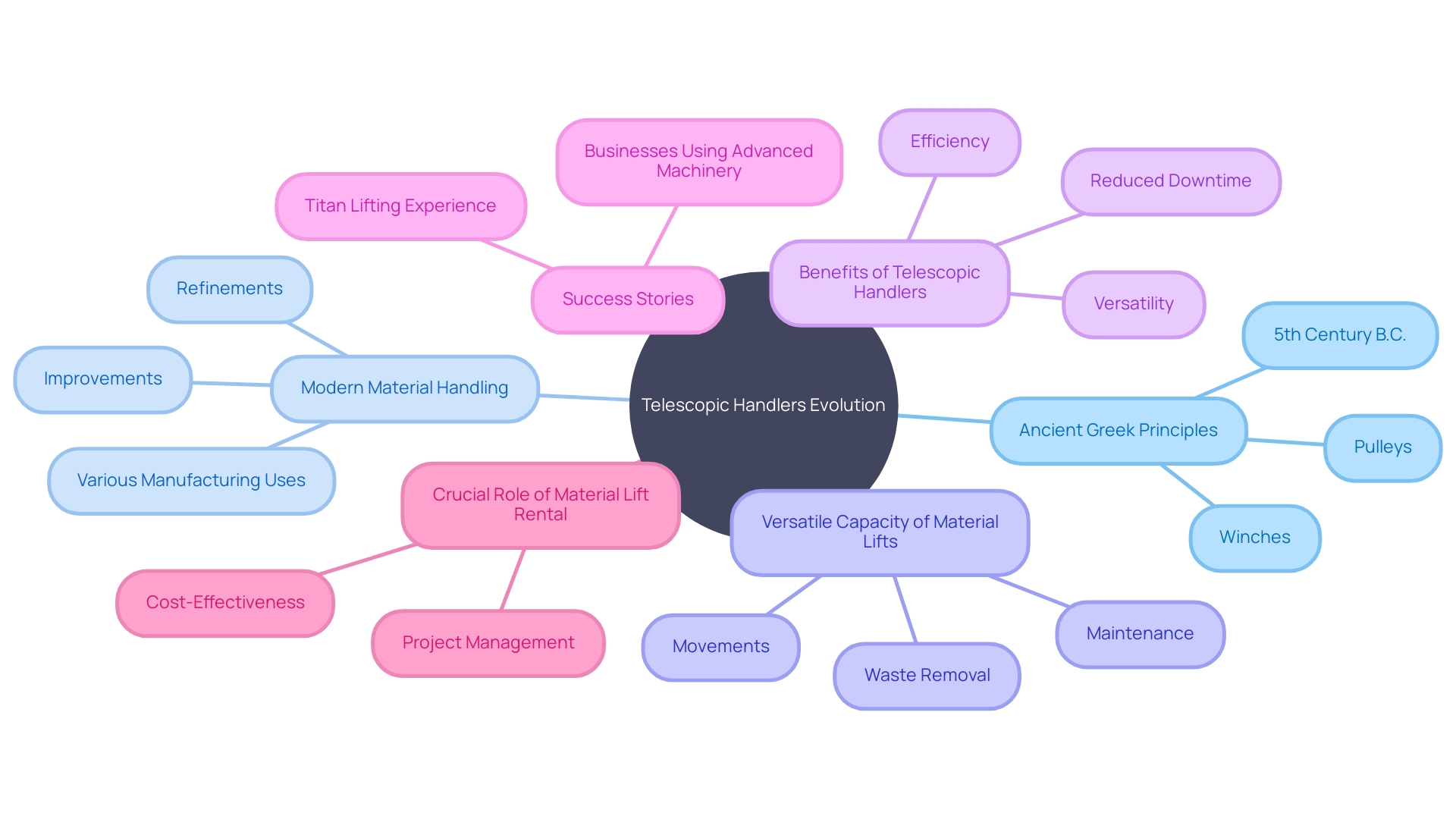
Streamline Material Handling
Harnessing the power of efficient material handling, much like the ancient Greeks who used winches to construct iconic temples, today's construction professionals can maintain critical project timelines through innovative solutions. Streamlined handling processes enhanced by material lift rentals offer a robust method for relocating heavy items, debris, or vital tools across various zones on a jobsite. This optimization minimizes operational delays, mirroring the effectiveness of modern-day automated logistics centers, such as Europris in Norway, which consolidated six warehouses into a single efficient hub powered by Swisslog's automation technology.
Additionally, the warehouse automation trend, as noted by industry experts like Bryan Gauger of Cisco-Eagle, showcases an increased adoption of Automated Storage and Retrieval Systems (ASRS), autonomous robotic devices, and Automated Guided Vehicles (AGVs). This shift towards automated solutions aids in curtailing waste and enhancing efficiency, epitomized by the use of advanced lifting equipment in manufacturing industries and the smart planning evident in the multi-phased automation journey exemplified by Europris.
The practicality of material lift rentals as a cost-effective strategy is underscored by the intricate detailing of forklift pricing options and their capabilities. Incorporating these strategies can not only keep projects in line with budgetary constraints but also sidestep extensive delays that can accumulate massive indirect costs, highlighting the significance of advanced planning and execution in project management.
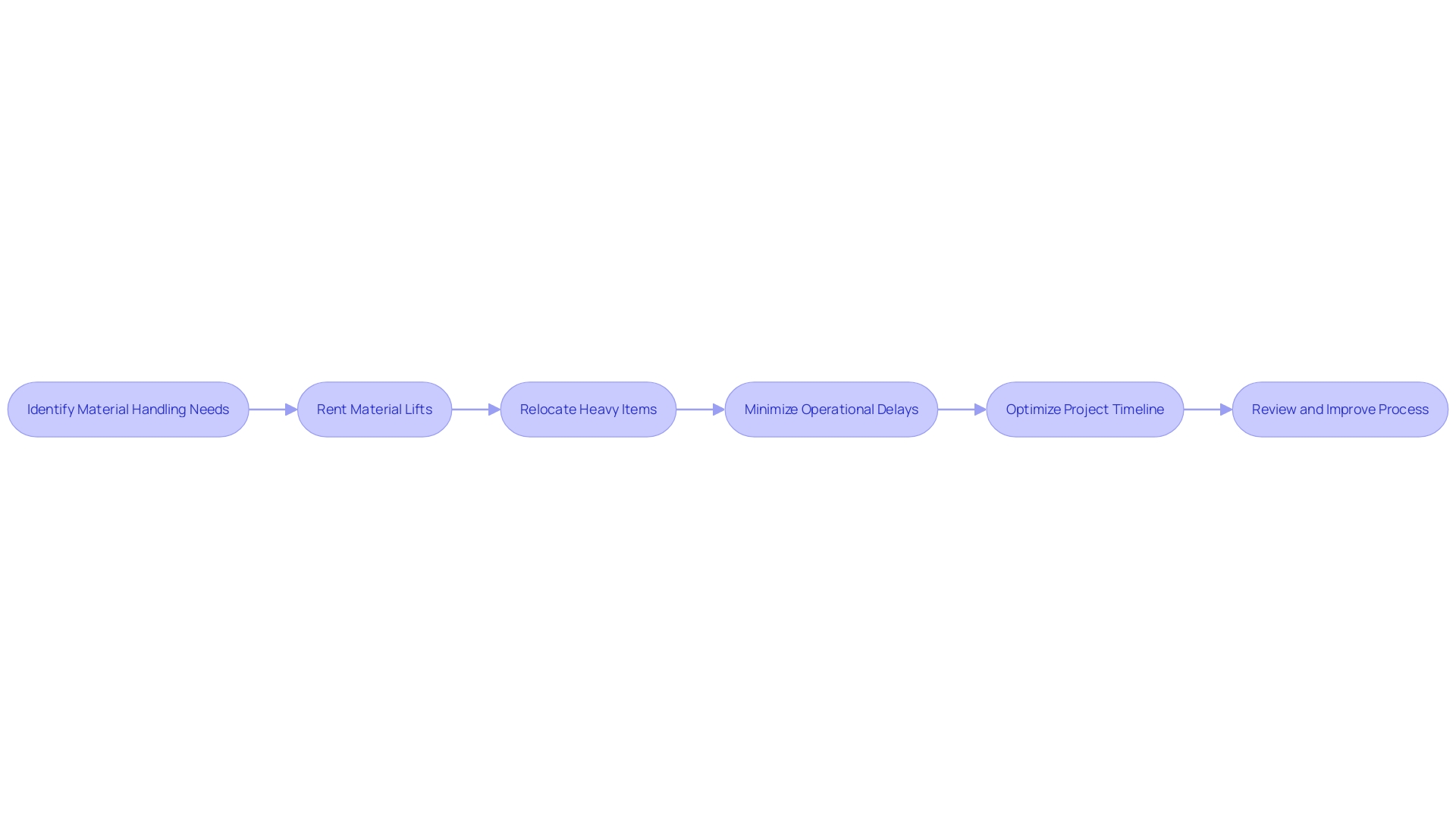
Extend Equipment Lifespan
Opting for rental material lifts is not only a savvy move to tackle immediate project needs but also a strategic approach to asset management. By using rental lifts for demanding tasks, you're effectively reducing premature deterioration on your primary equipment such as forklifts and cranes. It's a well-known dilemma that heavy machinery encounter - similar to how gas turbines age and the efficiency of trucks is gauged over time.
Machinery like forklifts, which generate approximately half their purchase cost in annual revenue over a seven-year average rental span, display a decrease in rental rates as they age. Consequently, rental services often sell these aging machines at a substantial percentage of their original price, optimizing the return on investment.
Leveraging rental equipment serves a dual purpose. Firstly, it offers an immediate solution to your project requirements without the full investment in purchasing. Secondly, and more importantly in the long-term, it extends the service life of your existing fleet.
Making use of rentals means less frequent cycles of repair or replacement due to wear and tear, which translates to lower maintenance costs. Not to mention that, as noted in the insights by the company Combilift which focuses on sustainable solutions, aligning with rental services that offer environmentally friendly options like lead-acid battery-powered forklifts not only enhances environmental stewardship but also assures you are part of a sustainable lifecycle for the equipment.
The operational benefits of rental material lifts resonate well beyond just cost savings, mapping onto larger business potentials such as productivity, cash flow, and sustainability. This is echoed by Hangcha's pathway to become a global leviathan in materials handling, indicating a significant trend towards valuing robust equipment solutions that promise both performance and adaptability.
As one of the common types of forklifts valiantly stands up to the jungle of varying specifications and price ranges, it's crucial to glean that material lift rentals represent a strategic financial cushion for firms. By shielding other machinery from undue wear, streamlining your equipment's lifecycles, and tapping into a pool of resources that are 'ready for rent', you're not just maintaining assets but also curating a more sustainable and efficient operation.
Improve Project Timelines
To keep pace with the needs of the construction industry, efficiency in every phase is a must. Using a material lift can significantly accelerate the movement of materials at the job site, reducing the time burden typically associated with material management. Not only does this bolster the consistency of work flow, but also supports the adherence to project deadlines.
In the fast-moving world of building and construction, where each minute can have substantial implications on the overall project schedule, such equipment is indispensable.
With an emphasis on sustainability and the conscious push towards reducing carbon footprints, companies like Rivian exemplify the industry's shift towards more environmentally friendly practices in material handling—aligning well with the overarching goal of net zero emissions. Seamless coordination of logistics is vital, especially for operations spread out over numerous states as in Rivian's case. Material lifts serve as effective solutions, reconciling speed with sustainability, enabling projects to progress promptly without forsaking environmental commitments.
Recent instances, such as the relocation of the Elmwood building by S. Rushton Construction, underscore the importance of having the right tools at your disposal. They were able to support a substantial building with steel beams, a task that likely required heavy machinery to execute efficiently. In this context, the strategic rental of specific equipment likely played a crucial role in achieving success without overburdening the project's budget.
Moreover, the economic landscape is shaping the construction industry's approach to equipment procurement. With a significant annual increase in the cost of materials and equipment like concrete, and the added layer of intricate supply chain dynamics (as seen during the pandemic), there's never been a more critical time to carefully consider the financial impact of machinery on project budgets.
Furthermore, top construction insights point to crane and forklift rentals as cost-saving measures that do not compromise safety—a paramount concern that is tightly interwoven with the success of project execution. Forklifts, cranes, and material lifts, when rented, can address multiple challenges by offering flexibility in resource management while maintaining strict safety standards.
According to experts, managing the 'Iron Triangle'—scope, resources, and time—can be an intricate balancing act. Proper equipment utilization plays a crucial role in this. Material lifts exemplify the harmonization of resources and time, ensuring the project scope remains intact and undistorted by the constraints of physical labor and time limitations.
In summary, efficient material transport through equipment like material lifts is not just a question of meeting deadlines—it's a strategic move that balances financial prudence, safety considerations, and sustainable practices within the broader context of the construction industry's evolving requirements.
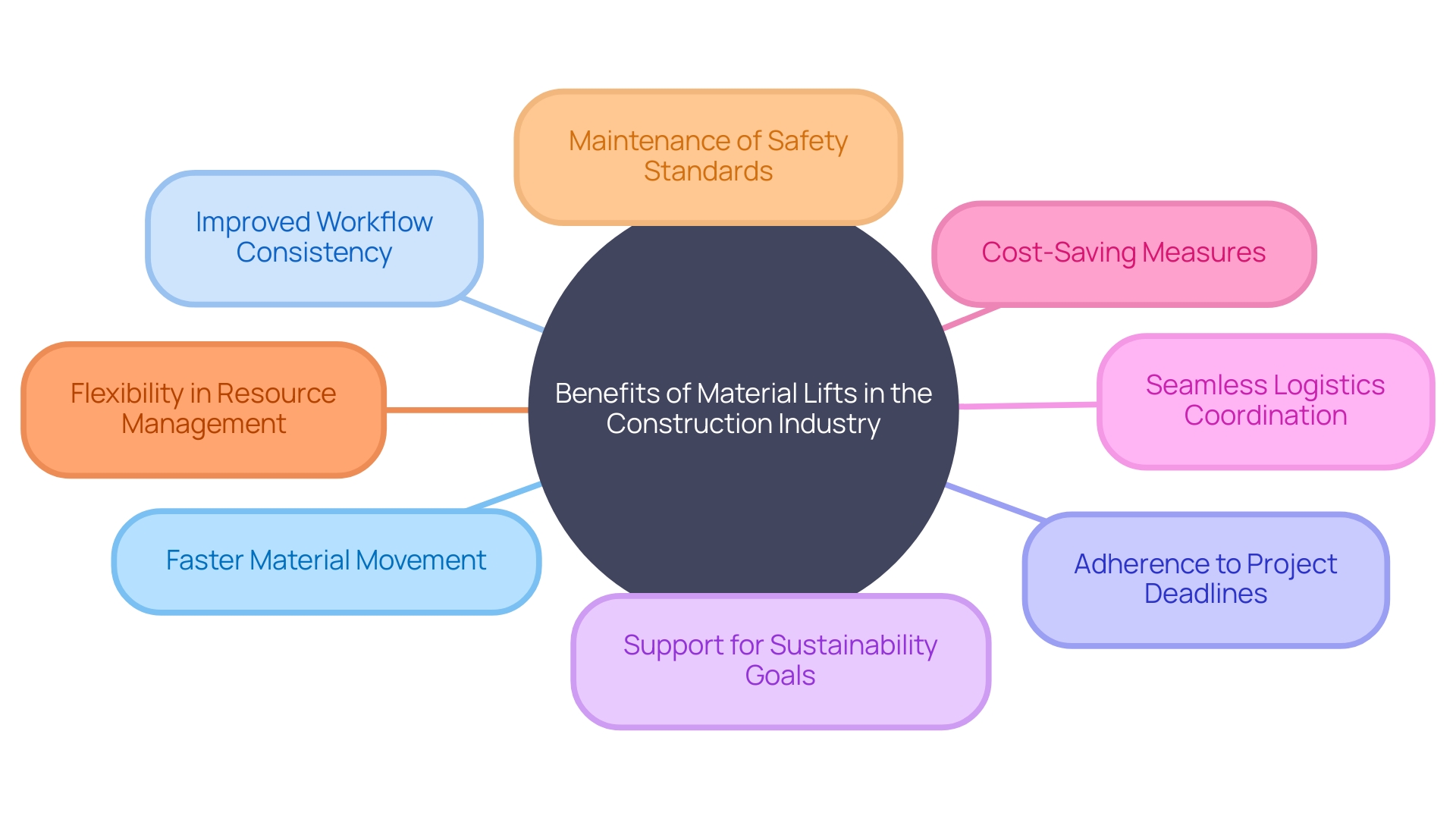
Better Inventory Management
Advancements in material handling equipment echo back to the ingenuity of ancient Greece, where winches and pulleys played a crucial role in erecting iconic edifices. Mirroring this legacy, today's material lift rentals offer a modern solution for meticulous inventory management in construction projects. These tools allow for precise tracking of materials, ensuring availability exactly when and where needed, thereby facilitating a streamlined workflow.
Integrating these systems aligns perfectly with the principles of a circular economy—a concept gaining momentum through an industry-wide collaboration spearheaded by LMN Architects since 2020. By emphasizing durability, deconstruction, and reuse, this approach not only reduces waste but markedly diminishes carbon emissions attributed to the construction sector.
CanLift Equipment Ltd.'s recent accomplishments highlight the effectiveness of such innovative and sustainable practices. With a doubling in size over two years, CanLift shows that investing in efficient logistics and diversified machinery, including material lifts, directly contributes to growth and operational excellence.
Construction professionals take heed—embracing rental strategies that underpin both economic and environmental stewardship presents a formidable pathway to success. As cost and time savings emerge naturally from these practices, the industry is set to witness a reduction in the 20% global greenhouse gases stemming from embodied carbon, making each project not only more profitable but also more sustainable.
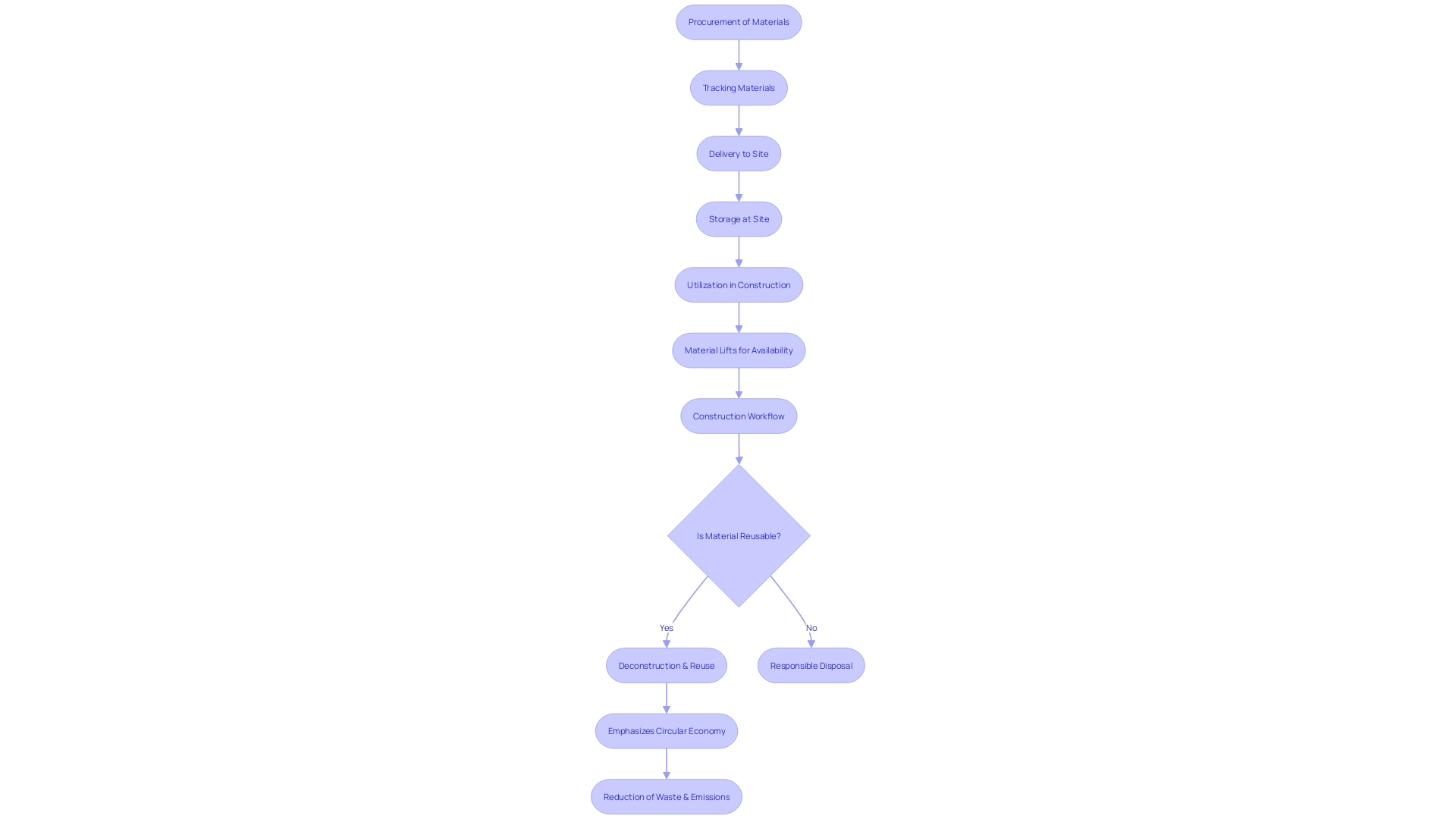
Environmental Benefits
Choosing to rent a material lift offers more than just practical benefits for construction and logistics—it also supports a greener future. Making the decision to rent rather than purchase equipment contributes to a global effort to minimize the environmental impact of new manufacturing demands, as supported by the European Investment Bank's commitment to finance projects that align with EU environmental objectives. The rental industry, led by companies like Boels Rental Group, is expanding access to high-quality, modern equipment through an extensive network across multiple countries, highlighting the shift towards more sustainable practices in material handling.
Furthermore, efficient use of a rental lift can significantly reduce overall fuel consumption, resulting in lower carbon emissions. This aligns with industry reports such as 'Building value by decarbonizing the built environment' which emphasize that adopting low-carbon strategies doesn't just benefit the environment, but can also be cost-neutral compared to traditional methods. By opting for rentals, stakeholders in construction projects make a direct contribution to greener building initiatives and demonstrate a commitment to sustainable development.
Cost-Effective Solutions
Opting to rent material lifts presents a smart financial move for construction project managers in the Dallas-Fort Worth region, especially given the added pressures of current economic realities. With material lift rental, you're not just securing a piece of equipment; you're embracing a Material Efficiency strategy that aligns with the larger global shift towards cleaner technology and reduced carbon dioxide emissions. Key materials like steel, cement, and aluminum are forecasted to see a decrease in demand by as much as 24% by 2060 due to these strategies, representing a considerable environmental and financial upside.
Telescopic handlers exemplify this shift, touted for their multifunctionality which slashes the need for additional machinery. This not only saves money but also propels projects forward more quickly, directly addressing the crucial need to meet tight deadlines while managing costs. The recent drop in construction of new single-family homes, due to spiraling material and labor costs, underscores the importance of tapping into tools that deliver both efficiency and cost savings.
To avoid unnecessary expenses in our uncertain economy, where commodity prices for essentials like concrete have surged due to sustainability drives and production issues, it's imperative to consider the life cycle impact of the equipment. Renting side steps the price hikes tied to new product development and long lead times, which have been inflamed by the pandemic's impact on manufacturing and supply chains.
The concepts of winches moving heavy objects dates back to ancient Greece, demonstrating the enduring importance of such equipment. Today, the array of forklift options, with various price points, features, and capacities, adds complexity to the equation. However, strategic rental decisions can counterbalance this, providing tailored solutions without committing to ownership, a strategy that has propelled companies like CanLift to achieve considerable growth rates by prioritizing strategic expansion and product diversification.
While some see material reduction in structures as 'low-hanging fruit', with modern structures already being light and efficient, the ongoing quest to pare down still more material isn't without its challenges. Structural and non-structural elements must navigate the balance between strength and deflection resistance; rental equipment must be chosen with the same scrupulous attention to detail. Understanding the nuances of construction costs, as outlined in an annual construction cost guide, can prevent budget and forecast inaccuracies that could derail a project by hundreds of thousands, or even millions, of dollars.
In this regard, renting not only meets short-term project needs but does so in a way that is inherently attuned to the material efficiency imperative that is reshaping industry trends.
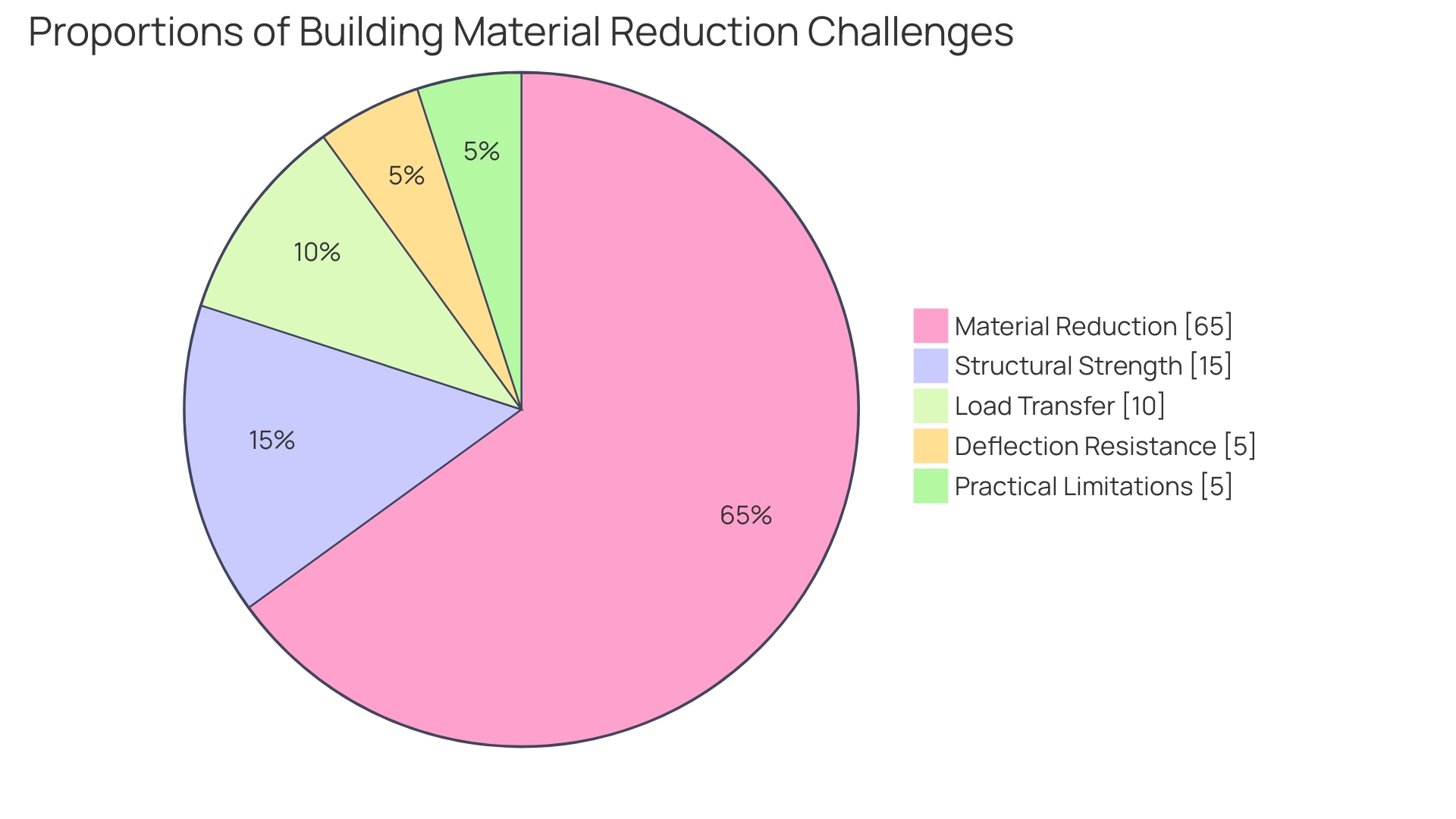
Call to Action
Enhancing your construction project's efficiency just became easier with strategic material lift rental opportunities. Selecting a reputable provider grants you access to state-of-the-art material lifts that can significantly reduce costs. This practical approach aligns with the broader industry trend of optimizing resources, a cornerstone of the circular economy, which emphasizes the continuous use of materials.
Such a philosophy, when paired with modern advancements like material lifts, supports the goals of sustainable construction by minimizing waste and maximizing the longevity of resources. In this context, utilizing material lifts not only bolsters project efficiency but also contributes to a more sustainable build environment, a consideration that is becoming increasingly pivotal in the industry. Material lifts, similar to the way ancient Greeks used winches for their architectural marvels, serve as an essential tool in contemporary construction, simplifying the movement of heavy items and reducing labor needs.
In light of a pressing labor shortage and the retirement of seasoned construction professionals, equipment rental also becomes a strategic solution to uphold project deadlines with a dwindling workforce. Incorporating material lifts into your operation promises a dual impact: streamlining construction processes and supporting an industry-wide shift towards sustainability. By exploring rental options, you position your project to benefit from cutting-edge technology and participate in a legacy of innovation marked by companies like can lift, with their commitment to product diversity and logistical excellence.

Conclusion
In conclusion, material lift rentals have revolutionized the construction industry by streamlining material handling, reducing costs, and enhancing productivity. They offer a cost-effective solution that optimizes workspace layout, reduces labor costs, increases safety measures, and improves project timelines. Choosing to rent material lifts supports a greener future by minimizing environmental impact and carbon emissions.
Material lift rentals provide unparalleled versatility, effortlessly lifting heavy materials and navigating diverse terrains. By streamlining material handling, construction firms can optimize resources, save money, and contribute to the sustainable development of the industry. Strategic workspace design, incorporating cutting-edge technologies, enhances worker well-being and productivity.
Efficient material transport through material lifts accelerates project timelines, reduces labor needs, and ensures consistent workflow. They consolidate capabilities, replacing multiple pieces of machinery and improving productivity. Material lift rentals offer a practical and sustainable solution for construction project managers, aligning with the principles of a circular economy.
By choosing to rent material lifts, construction firms can minimize operational delays and ensure better inventory management. They provide a cost-effective strategy that supports efficient project management and sustainability goals. Material lift rentals are essential tools that enhance construction project efficiency and contribute to a greener future.
In summary, material lift rentals enable construction project managers to optimize resources, save money, and enhance efficiency. They offer a practical solution that aligns with sustainability goals and supports the overall success of construction projects. By leveraging the benefits of material lift rentals, construction firms can streamline material handling, reduce costs, and contribute to a more sustainable and efficient industry.




